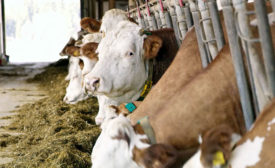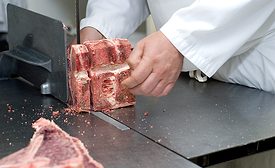Home » Keywords: » pre-harvest interventions
Items Tagged with 'pre-harvest interventions'
ARTICLES
Pre-Harvest Strategies to Reduce Foodborne Pathogens in Red Meat Production
Many new pathogen reduction interventions have been implemented in recent years on the post-harvest side of animal-derived food production
February 6, 2023
Food Safety
Can genomics advance pre-harvest intervention strategies?
Common-sense prevention still works for pre-harvest intervention, while new food safety tools continue to be researched.
June 29, 2018
Meat Science Review
Continued pre-harvest efforts to address Salmonella in bovine lymph nodes
June 20, 2018
Study: Safer meat requires reducing risks where food animals are raised
A variety of pre-harvest interventions can significantly reduce the risk that bacteria harmful to humans will infect food animals.
July 24, 2017
Technology intervenes on pre-harvest interventions
Consumer demand for antibiotic-free products requires new
pre-harvest interventions.
June 22, 2017
Never miss the latest news and trends driving the food safety industry
eNewsletter | Website | eMagazine
JOIN TODAY!Copyright ©2025. All Rights Reserved BNP Media.
Design, CMS, Hosting & Web Development :: ePublishing






